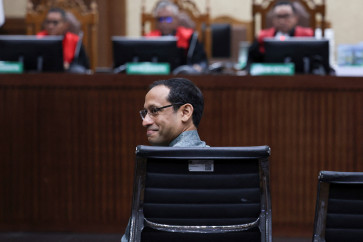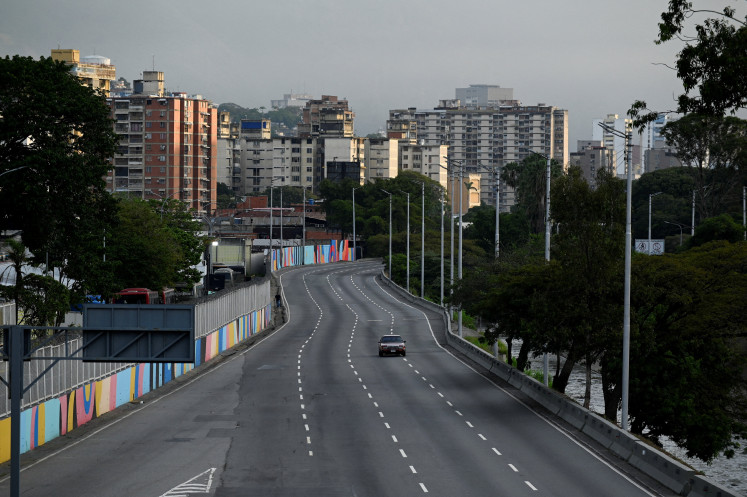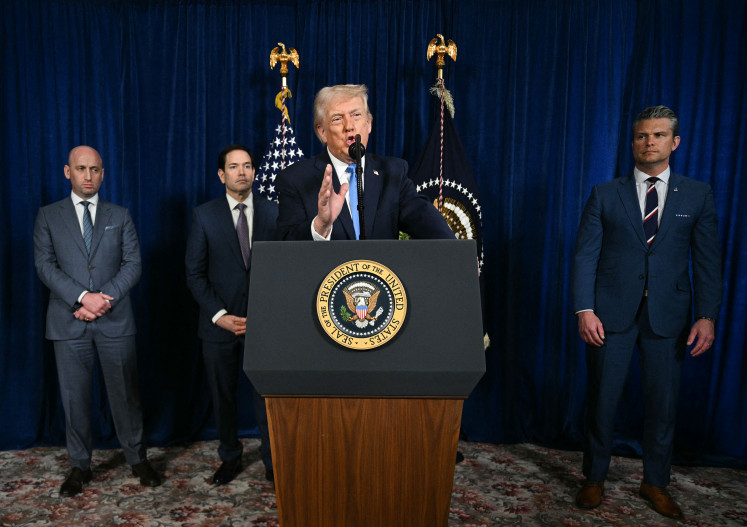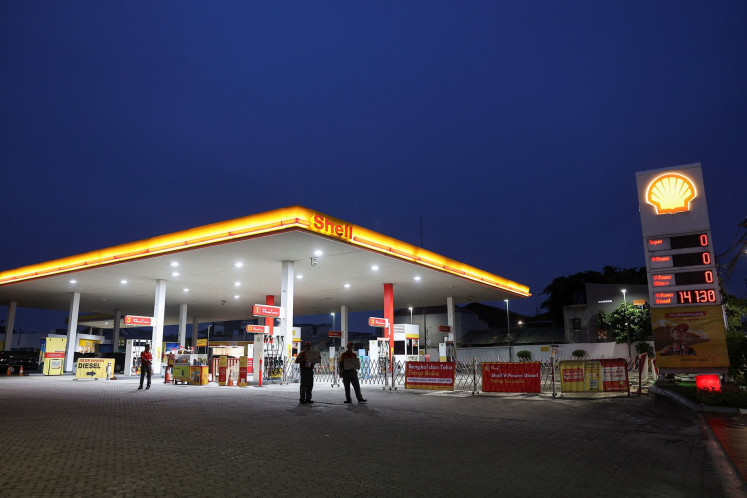Popular Reads
Top Results
Can't find what you're looking for?
View all search resultsPopular Reads
Top Results
Can't find what you're looking for?
View all search resultsMudflow erupting after 7 years
Residents of Porong, Sidoarjo in East Java will never forget May 29, 2006
Change text size
Gift Premium Articles
to Anyone
R
esidents of Porong, Sidoarjo in East Java will never forget May 29, 2006. This was the date when a mudflow began to erupt in the area, forever changing their lives.
The eruption took place near a drilling site belonging to PT Lapindo Brantas. This triggered speculation that Lapindo might have been negligent during its drilling process.
Lapindo, however, cited a number of scientists’ arguments that the mudflow was triggered by a 6.3 Richter scale earthquake that hit Yogyakarta two days before the eruption took place.
For nearly seven years the mudflow has been wreaking havoc in the livelihoods of Porong residents in particular and on the Sidoarjo economy as a whole.
The monetary value of the damage wrought by the continuous high-pressure mudflow has been estimated at Rp 27.7 trillion (US$2.9 billion) by the National Development Planning Board and Rp 33.27 trillion by Greenomics Indonesia, an NGO.
The mudflow has also buried more than 600 hectares of land, displacing 39,700 people and submerging three subdistricts, 12 villages, 11,241 buildings and 362 hectares of rice fields.
The flow was last estimated at about 10,000 to 15,000 cubic meters per day, while in 2007 and 2008, during the highest peak of the flow, the amount could reach 150,000 a day, according to the data from the Sidoarjo Mudflow Mitigation Agency (BPLS).
Taxpayers have paid more than Rp 6.7 trillion in compensation to date via the state budget and the government has budgeted Rp 723 billion for the 2013 fiscal year for the same purpose.
An audit report from the Supreme Audit Agency (BPK) published on May 29, 2007, revealed that there were numerous violations made by various stakeholders during the drilling process that eventually led to the mudflow eruption.
First, the BPK report said that the Sidoarjo regional government had violated several regulations when it permitted Lapindo to conduct drilling in the area.
“The drilling is located five meters away from residential zone, 37 meters from public infrastructure [the Surabaya-Gempol highway] and less than 100 meters away from Pertamina gas pipes,” BPK member Hasan Bisri said in the report.
“The permission given by the regional government to conduct drilling exploration in an area close to residential and public infrastructure violates the Indonesia National Standard Agency Regulation no. 13-6910-2002, which clearly stipulates that explorations such as drilling must be conducted more than 100 meters away from residential and public infrastructure,” Hasan added.
The BPK also deemed that Lapindo had appointed a contractor that lacked the capacity and capability to conduct the drilling.
“PT Medici Citra Nusa [MCN] as the appointed contractor for the drilling does not have enough experience to conduct the project. The MCN company profile showed it had conducted similar projects only once in 2001. This lack of experience would increase the risk,” Hasan said.
“The MCN drilling crew also lacked the capacity to do its job properly. Based on the daily drilling report, several drilling crew
members often faced difficulties during operations,” he added.
Regardless of the findings of blatant human errors by the BPK, the Supreme Court ruled on April 3, 2009, that the mudflow was a natural disaster and therefore, Lapindo had no responsibility to compensate the residents whose villages were now at least ten feet under
the mud.
The court’s ruling drew heavy criticism from numerous environmental and human rights activists. They deem that political interests might have played a role behind the ruling due to the fact that Lapindo is partially owned by the influential Bakrie family, which is under the patronage of Golkar Party chairman Aburizal “Ical” Bakrie.
Eventually, under heavy pressure from the public and his political enemies, Aburizal said that the Bakrie family and Lapindo were committed to paying compensation for the mudflow victims.
He also said that the only reason he was willing to pay the compensation was because his late mother told him to do so.
However, President Susilo Bambang Yudhoyono recently revealed that they still owed at least Rp 800 billion to compensate the victims.
“I heard that Lapindo has not fulfilled its obligation. Its liability of Rp 800 billion [$82.9 million] has not been met,” Yudhoyono said.
In response to Yudhoyono’s statement, Lapindo executive Andi Darussalam Tabusala said that the compensation payment would be completed in May this year, which will mark the seventh anniversary of the disaster.










